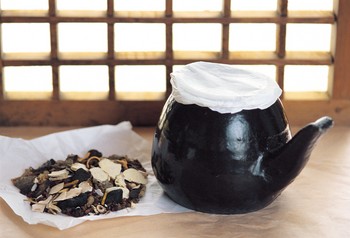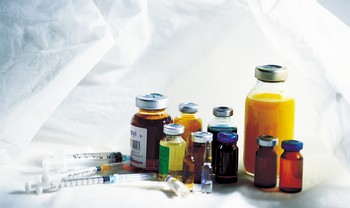Stay Informed
Popular Articles
- Hiatal Hernia: Hidden Cause of Chronic Illness
- Small Intestinal Bacterial Overgrowth (SIBO)
- Applied Lymphology: Unlocking the Secret to Pain Relief
- An Introduction to Constitutional Iridology
- The Low Down on Liver Detoxification
- An Energetic and Emotional Approach to Cancer
- Fat Facts
- Marrow in the Bones
- Blood Type and Nutrition
- Cardiac Herbs: Beyond Hawthorn
Quick Search
The School of Modern Herbal Medicine




When Does a Supplement Stop Being Natural?
- 6/20/2009
- Categorized in: General Health
This is page 2 of a four-part article.
Having established that natural things can be toxic, let's move to the other side of the discussion—what is natural? These days, the “natural” products industry is promoting a wide variety of highly refined substances as “natural” remedies. Of course, if we take the viewpoint that everything has to be completely natural, then we should only be chewing on fresh herbs, because everything else has been processed in some way.
Again, there are two extremes here. Eating a sprig of fresh parsley is one end of the spectrum. It is using the plant exactly as it exists in nature. On the other end of the spectrum are the synthetic drugs. These are patent chemicals that were invented in a laboratory. They never existed in nature. Almost all drugs developed since the 1960s fall into this category. We could safely call these substances unnatural.
In between we have a whole continuum of processing. For example, if we make an herbal infusion (tea) or decoction, we are not getting everything found in the original plant. So, is this natural? Since we are extracting a whole complex of substances using just water, I think we're safe in saying these preparations are natural.
Moving farther away from the whole plant, we have tinctures and extracts of various kinds. These involve solvents other than water, like glycerin and alcohol. But, are alcohol and glycerin natural?
Alcohol is a natural product of fermentation (or decay), but the kind of alcohol used in tinctures has been distilled and “purified.” Glycerin is a derivative of fats and a by-product of making soap. Neither of these extraction mediums is found in their isolated form in nature. They both have to be manufactured. So, tinctures and extracts are a little farther removed from the whole natural state, but they are still complex mixtures of chemicals and thus qualify as being “natural” to a certain extent.
There have always been standards for making tinctures and extracts. The term standardization simply refers to making products according to a specified standard. When you see the initials “USP” it means it has been made according to the standard found in the United States Pharmacopeia. Older versions of the United States Pharmacopeia contained numerous USP standards for botanical medicines. These standards included information about when the plant is to be harvested, what part, what marker compounds it should contain, what percentage of water and alcohol should be used to extract the herb, and how long the extraction should take. So standards have been around for a long time.
There is nothing wrong with establishing standards for botanical medicines. It is absolutely necessary for the practice of herbal medicine, and the more toxic the botanical, the more important standardization is. We need to have a method of assuring some consistency in the end product so that we can depend on it to have the effect we desire. Roy Upton, vice-president of the American Herbalists Guild, is spearheading the project of creating a modern pharmacopeia for herbal medicines—a project that will benefit the entire industry.
 Isolating “Active Components”
Isolating “Active Components”
Of course, at this level of standardization the actual compounds present in the plant will vary from batch to batch and from year to year. This is very unsettling for scientists steeped in a mechanistic scientific paradigm. What they want is something that is exactly the same from batch to batch. That's why they search for specific chemicals that they can isolate. They call these chemicals “actives,” giving the false impression that they are the only part of the plant which has any effect on the body.
In the modern herbal world, many companies are pushing for standardization based on “actives.” This is often called guaranteed potency. In some herbs there are clearly identifiable chemicals that are primarily responsible for the plant's effect. This is the case with kava kava. The kavalactones it contains are largely responsible for its effects, so making certain that a certain percentage of kavalactones are present makes some sense.
There are two ways of making these kinds of products. One is to extract the herb using a variety of chemical solvents that favor the constituents which are desired. The level of these constituents is then measured (assayed) in the finished extract and the extract is concentrated or diluted to the desired “potency.”
Another method of doing this is to extract and isolate the specific chemical substances that are desired and then add them back into a base of the whole herb to achieve the desired potency. In essence, we make an herbal “drug” by isolating specific chemical substances and then mix that “drug” back into the herbal base.
There are a couple of problems with this approach. First of all, it is often the synergy of many ingredients that accounts for the effect of an herb, so how do you guarantee the potency of the product? Second, many of these guaranteed potency herbs actually are less effective in clinical practice. The original study with feverfew involved chewing on whole leaves. None of the “standardized” preparations of feverfew have been able to obtain the same clinical results as chewing on the leaves. So, from the eclectic point of view, “standardized” doesn't automatically mean better.
The third issue, and the one that concerns me the most, is that we are calling isolated plant chemicals natural. If this is the case, many modern drugs are natural, too. Digitalis, for instance, comes from a plant, so it is a natural drug derived from a toxic botanical. Ephedrine is found in many over-the-counter cold medicines. It is also a natural drug derived from ephedra. So, if we are going to call these isolated extracts natural, then a substantial percentage of our OTC and prescription drugs are natural as well. I just can't make this leap.
To me, if we isolate and concentrate any compound from a plant, we have created a drug. By that standard, I personally consider refined sugar a drug because there is nothing “natural” about it. If we put an isolated chemical back into a base of the whole plant, that's like taking refined sugar (sucrose), mixing it with some raw sugar and calling the whole thing natural. That just doesn't cut it for me.
